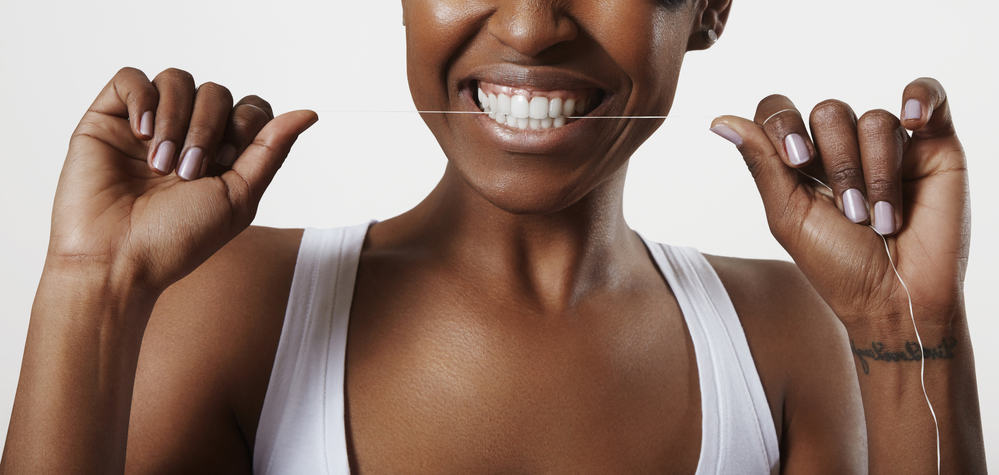How Flossing Helps Dental Anxiety

Anxiety, in any form, is partly about control, and it’s no different with dental anxiety. Whether you faithfully head to the dentist’s chair every six months, or your fear keeps you from visiting as often as you should. One primary way to decrease your dental anxiety is to increase your level of control. A great way to do this is by being diligent with your oral hygiene, and that includes flossing.
Not Everyone Flosses, But They Should

A direct link between flossing and dental anxiety has been shown. One study involving college students in Indiana showed that participants that reported flossing regularly had less dental anxiety than those who did not floss. One possible reason for this is because flossing gets food and the bacteria that comes with it that brushing alone can’t do. It makes for less potential pain during dental visits and allows patients more control.
Choosing the Floss and the Method of Flossing

As for the floss itself, there are multiple types. Choose from traditional floss, waxed or unwaxed that comes in a spool, floss “tape” that is a bit more ribbon-like, disposable floss picks, or superflossers, which have a sponge component that makes things easier for those with braces. There are also electric flossers or water picks that make the process even easier.
Flossing From a Spool
If you use traditional or flossing tape from a spool, it is recommended to use a piece that is 18-24 inches long. This allows enough length to secure with your fingers and properly control. Choose a tooth to start with and go around the mouth going between two teeth gently. Move the floss between every two teeth and along the gum line. Shift the floss as you go, so each tooth gets fresh floss. Curving the floss in a C-shape can help you release food between your gums and teeth. Be careful not to scratch or bruise your gums.
Flossing With Picks
While picks are generally not as effective, many people are more comfortable using them. They also like them for their portability to use anywhere and discard. The method is much the same as traditional floss, but a bit of improvisation is required. For example, making the C-shape is hard with a pick, so you may need to glide the pick portion at your gum line to release food particles. It is also impractical to use a new flossing pick for each tooth. Picks should be rinsed well before using them on the next tooth and discarded at the end of a flossing session.
Developing Good Habits Builds Confidence

Those who have not yet built a regular flossing habit may find themselves taking shortcuts when it comes to flossing. They may also be a bit inconsistent with the habit. Some floss every time they brush, and others do so once a day. Some only manage to get to flossing a few days a week. Better habits are always the goal, but be sure to give yourself credit for flossing, whenever you do it. You’ll find yourself smiling more both in and out of your dentist’s chair.
Conclusion
At Dental Brothers, we are mindful of our patients’ anxiety levels and are here to help you in any way we can, including dental sedation, if necessary. If you experience dental pain or are due for a check-up or cleaning contact us today to schedule a consultation or appointment.

